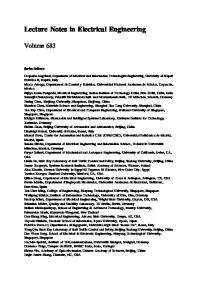Face recognition with a new local descriptor based on strings of successive values
- PDF / 3,332,048 Bytes
- 29 Pages / 439.37 x 666.142 pts Page_size
- 57 Downloads / 281 Views
Face recognition with a new local descriptor based on strings of successive values H. Zaaraoui 1
1
1
& S. El Kaddouhi & A. Saaidi & M. Abarkan
1
Received: 28 August 2019 / Revised: 6 July 2020 / Accepted: 21 July 2020 # Springer Science+Business Media, LLC, part of Springer Nature 2020
Abstract
In this paper, a novel face recognition approach based on strings of successive values (SSV) is presented. In contrast to most of the existing local descriptors which encode only a limited number of pixels included in a mask, the strings extract more discriminative information over the whole face region, by moving from the current pixel to the next one, and to the other next, and so on, according to the variations of their intensities. Therefore, the SSV can be stopped in any place of the face area, which allows us to encode more edge information and texture information than the existing methods. The proposed face recognition scheme requires several steps. Firstly, the images are divided into nonoverlapping sub-regions from which the strings are extracted since each pixel produces two different strings. Thereafter, the dictionary of visual words is created to reduce the number of strings obtained from each patch of the image. Therefore, the face image is described only by visual words, because each string is replaced by its nearest dictionary word. As a result, the occurrence of visual words is computed in a histogram as a face descriptor. Finally, the recognition is performed by using the nearest neighbor classifier with the Hellinger distance. The effectiveness of the proposed approach is evaluated on three different databases, and the experimental results show that the recognition performances achieved are competitive or even outperform the literature state of the art methods. Keywords Face recognition . Local descriptor . Strings of successive values . Levenshtein distance . Hellinger distance
1 Introduction Face recognition is an effective biometric technology used to identify people from images of their faces, this field has attracted many researchers for being very popular, non-intrusive, and
* H. Zaaraoui [email protected] Extended author information available on the last page of the article
Multimedia Tools and Applications
inexpensive [9]. Furthermore, the face recognition systems are usually used for crime prevention, video surveillance, passport verification, social networks, and the location of missing people [20]. Despite these advantages, the topic still suffers from several obstacles namely: Facial expressions (smiling, surprising, sad….), orientation poses, variation in illumination, partial occultations (mustaches, glasses, or non-glasses), aging, and change of appearance [9, 20]. Therefore, the subject remains active while new approaches to overcome these problems are still invented [16, 18, 42]. In general, there are three steps in each face recognition system: Detecting a face in an image [12, 13], representing a face image as a feature vector [1, 3, 8, 48], and matching faces to di
Data Loading...











